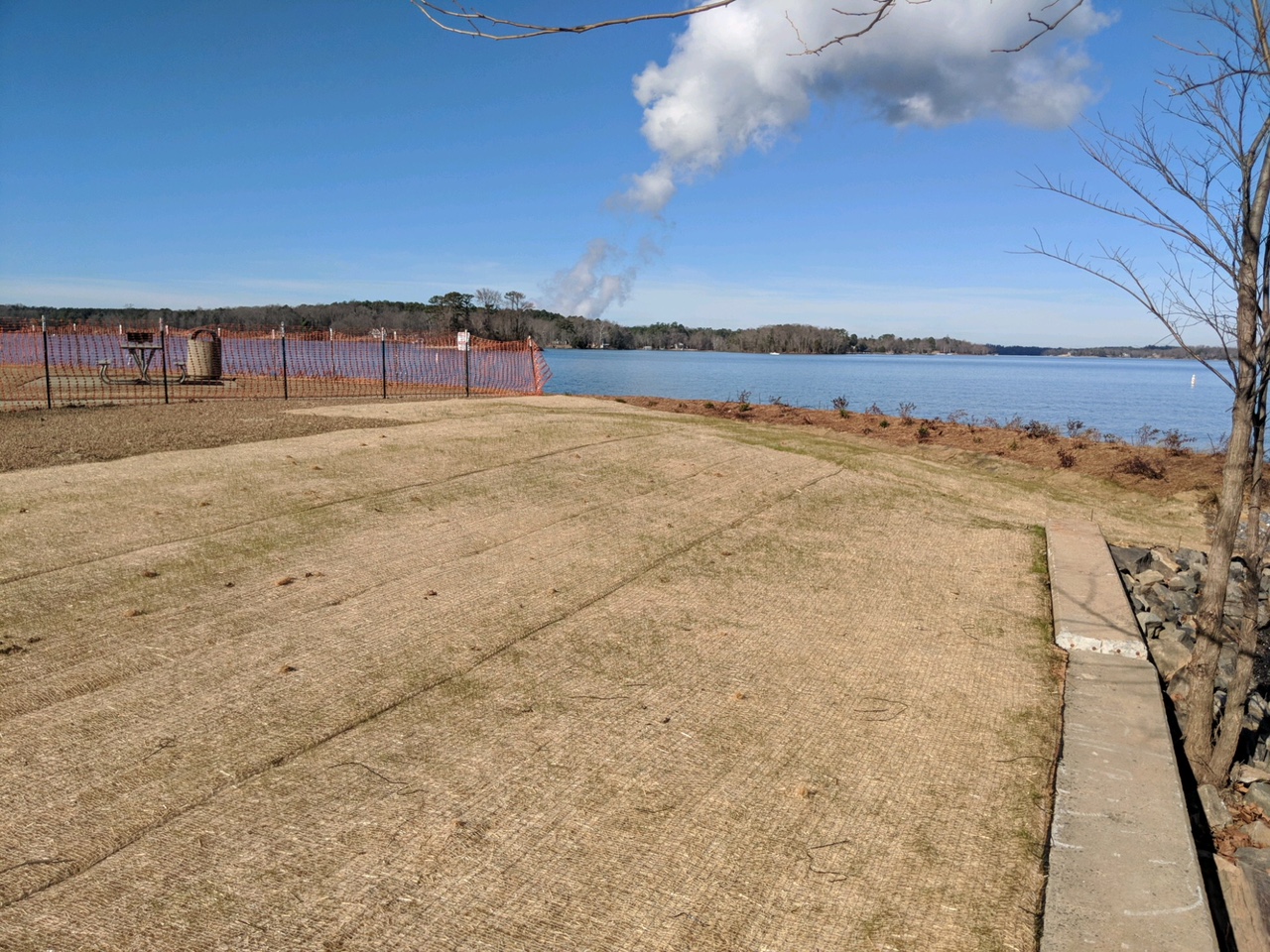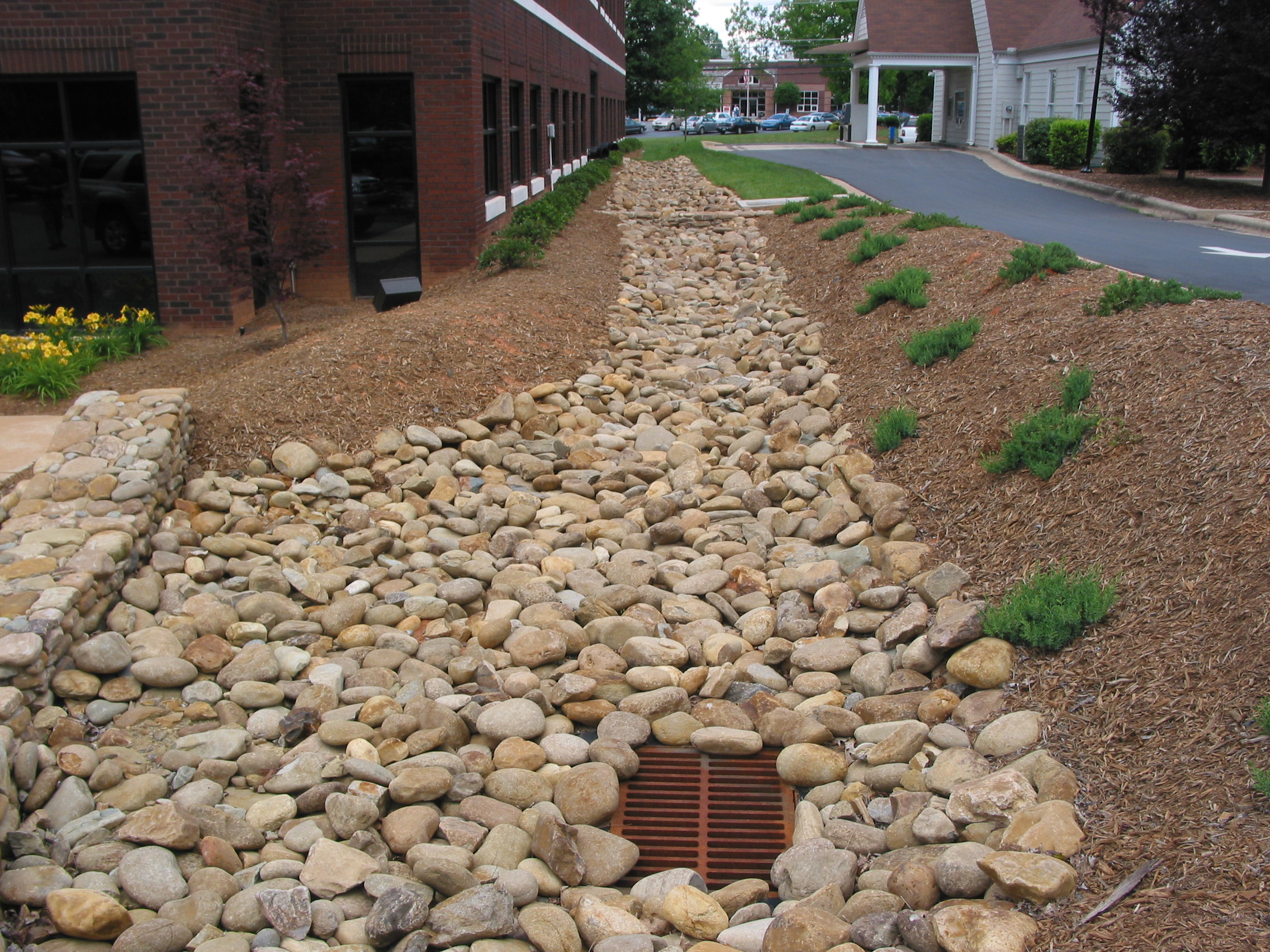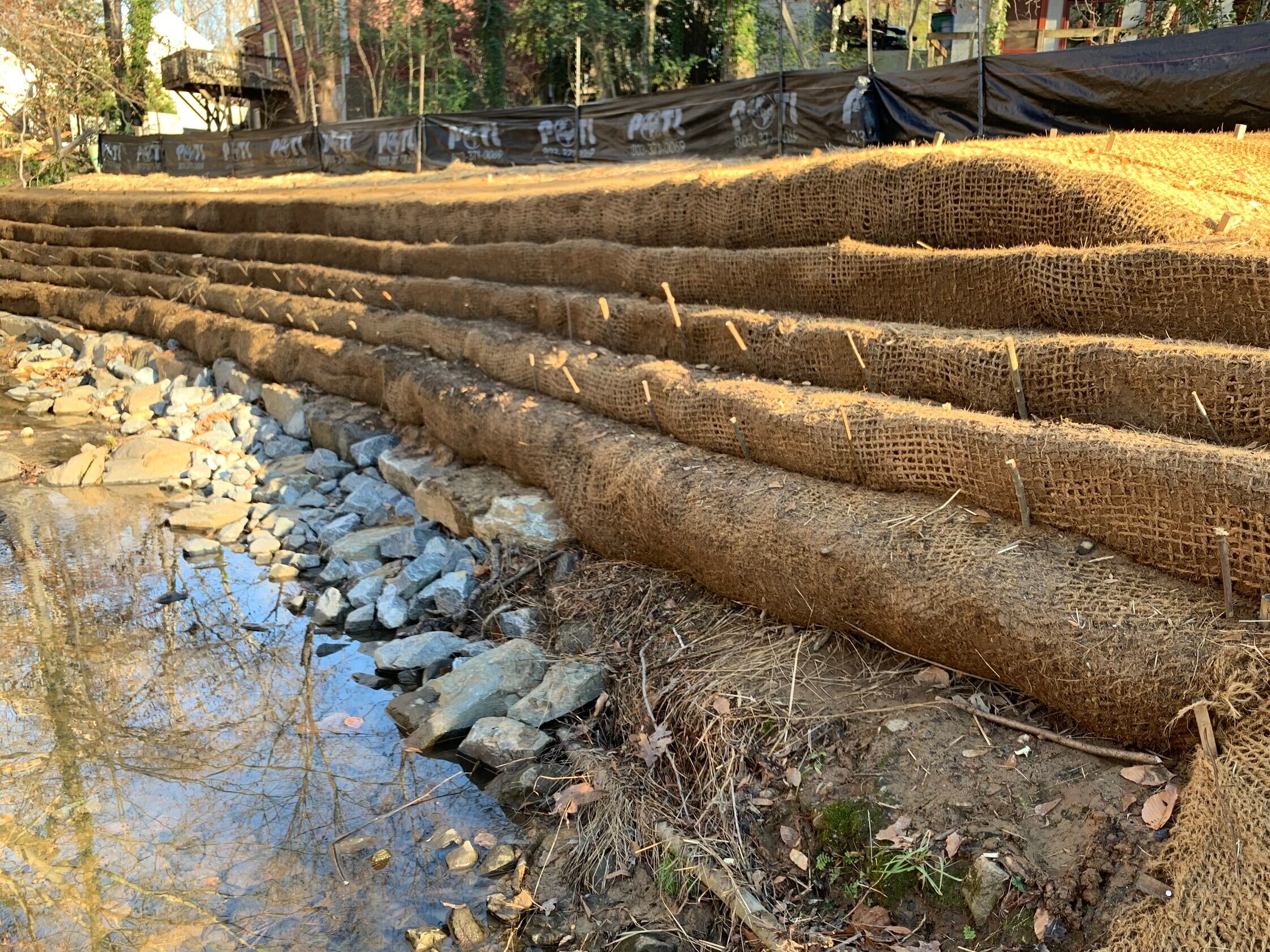Bioengineering
The term “Bioengineering” when used in the context of land stabilization encompasses two subsets of techniques utilized for stabilizing soil. Both techniques employ the use of live plant materials to achieve protection against the erosion of soil along with structural engineering. “Soil bioengineering measures are a special case of biotechnical stabilization in which plants or plant parts, primarily live cuttings, are embedded and arranged in ground in special patterns and configurations (Gray, 1996).” “Biotechnical stabilization utilizes mechanical elements (or structures) in combination with biological elements (plants) to arrest and prevent slope failures and erosion (Gray and Sotir, 1996).” Soil bioengineering can be used on low to moderate slopes to prevent surface and shallow soil movement. Techniques include livestakes, brush mattresses, live fascines and live cribwalls. It is important to consider that live materials are vulnerable when first installed and gain permanence and stabilization as root systems expand and gain strength. Biotechnical stabilization is characterized by the combined use of plants and hardened materials or structures. Examples include incorporating vegetation with crib walls, rip-rap, gabions, geogrids, and pavers.




